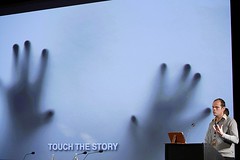Learn to Draw & Paint - How & Where to Study to Be an Artist
The answers can be complicated and confusing. Search the web for the phrase "art school" for millions of choices. If you go to the web and Google (search) "learn to draw" you get to choose from 4,880,000 web sites (at least that's what I found while writing this article). By the time you try it, there will likely be more.
If you do a web Search using Google for the term "learn to paint" Google showed 854,000 web sites in the light blue bar at the top of the page under the "Google" logo.
There are degree granting and non-degree granting art schools, art schools with classrooms and online art courses. Some non-degree art courses give "Certificates of Completion."
Finding an art school course to learn to draw and paint that suits your personal needs, allocation and ready time is a challenge.
Here is a list of some of the options:
Option 1: A way to learn drawing and painting is to go to an art school, college or university like Pratt establish (campuses in Brooklyn and Manhattan in New York City, Usa where I graduated and later taught). Two issues for many habitancy are the time and money needed. The Bachelor of Fine Arts Degree I took at Pratt now costs over 0,000.00 Usd for the four year degree program. Of course, this web report is viewed by a worldwide audience. To see the great art schools colse to the world, there is a very good listing of them on the Saatchi Gallery web site page titled: "Art Colleges colse to the World: Universities, optic Arts, Fashion and establish Institutions." The Saatchi Gallery Art Colleges page web site adDress is listed on the links page in the resource box at the lowest of this article.
The Saatchi Gallery list includes the college I graduated from (Pratt Institute, Brooklyn, New York City, Usa) and art schools in many countries all across the world. The Saatchi Gallery art school listings had 57 pages with thousands of art schools listed when this report was written.
Option 2: Take a local art course whether at a incommunicable art school, a local high school, secondary school or college. Of course, some localities don't offer that option and the skills of the teachers are important, so you need to get recommendations and check these teachers out before you enroll. You can Google these choices, ask neighbors, friends and teachers in schools near you. You might also get recommendations from art clubs if you have them in your locality. Some artists give incommunicable art classes to individuals or groups. I used to give incommunicable group lessons in the basement of my home.
Option 3: Just pick up a pencil or oil paints and start drawing and painting. This works for some habitancy like Grandma Moses (Anna Mary Robertson) who taught herself how to paint starting at age 81. See the report about her on Wikipedia (adDress of Grandma Moses report on Wikipedia is listed on the links page in the box at the lowest of this article). Grandma Moses had no art training and her paintings, originally priced at .00 to .00 Usd, now sell in the ,000.00 to ,000.00 Usd range and her annual income was said to be 0,000.00 Usd in the late 1950s. Grandma Moses died in 1961 at the age of 101.
Option 4: Buy some art books and/or video tapes on how to draw and how to paint at Amazon.com, Barnes and Noble online or at your local book store and learn to be an artist. I once had a teacher who said take a few weeks in art school studying the basics (which end of the brush to use, etc.) and paint 200 pictures and you'll be an artist. This works for some people.
Option 5: Online distance studying art courses are for students unable to attend on-campus classes. Online art courses contribute flexibility as to when students study and custom and when they complete lessons. Some offer degrees and some hobby courses issue certificates of completion. Some consist of totally online step-by-step how-to lessons the trainee follows to teach themselves. Others send the students art textbooks, art Supplies and chapter plans. The trainee reads the art textbooks and follows the recommended drawing and painting custom sessions. Next, the distance trainee completes and mails their assigned drawing or painting to their school. An teacher at the school draws or paints a critique with comments of each of the student's assigned photograph and mails the student's work and critique to the student.
Option 6: There is a new kind of art school using the web to interactively teach drawing and painting.
A Digital camera is included in each student's sign up kit along with art textbooks and art Supplies. Students who have their own Digital camera deduct the cost of the Digital camera, usually supplied with the course, from the tuition cost. The kit is mailed to the newly enrolled student. The trainee works at home, reading the art textbooks, practicing, and then doing the assigned chapter artwork from the assignments they get in their personal web portfolio on the school web site.
The trainee takes Digital photos of their completed chapter artwork for each chapter and then sends those photos as email attachments to the school.
The art teacher at the online art school draws or paints a critique of the emailed student's chapter artwork with comments on how the trainee might have great understood the lessons taught in the art textbooks and supplemental on line mini-lessons. That painted or drawn critique of each student's submitted artwork is posted to the school website, a personalized how-to-do-It-better critique for the trainee to see 24/7/365. The student's submitted drawings or paintings and the teacher's critiques are shown on in the student's personal web portfolio at the school's web site.
Subjects covered are drawing, form, composition, color theory, perspective, still life, scenery drawing and painting as well as drawing and painting the figure.
This school offers a "Certificate of Completion" and a Cd with all of the student's submitted work, all of the critiques by the teacher and suggestions for prolonged increase as an artist on completion of the full art course.
![Artist's Way [Paperback]](http://ecx.images-amazon.com/images/I/51p6REyuyqL._SL500_AA300_.jpg )


